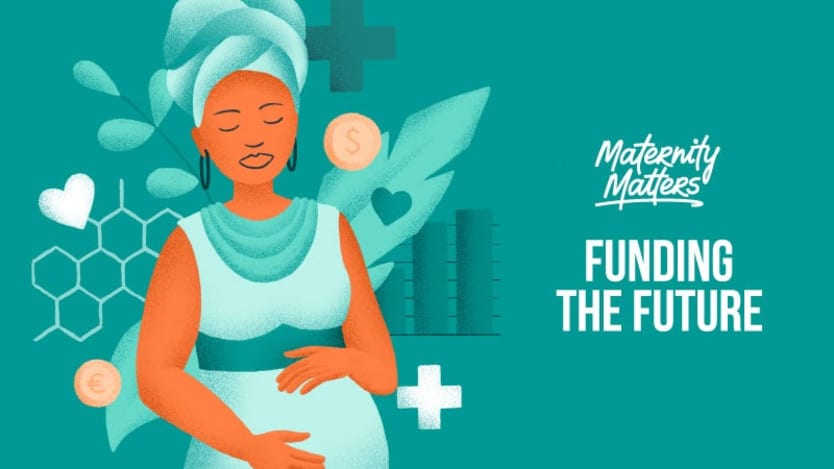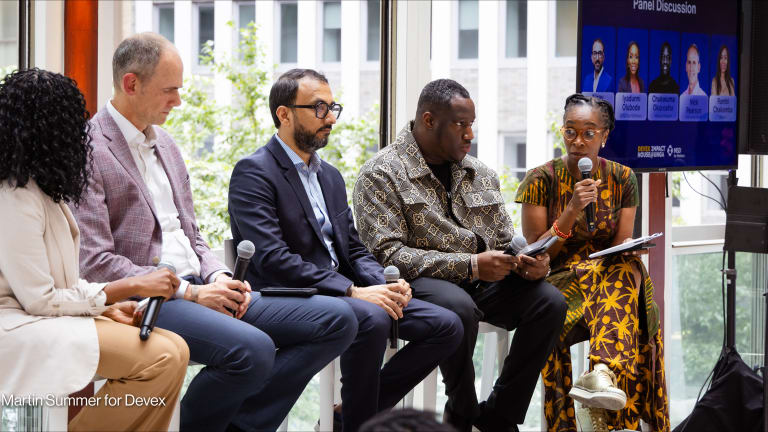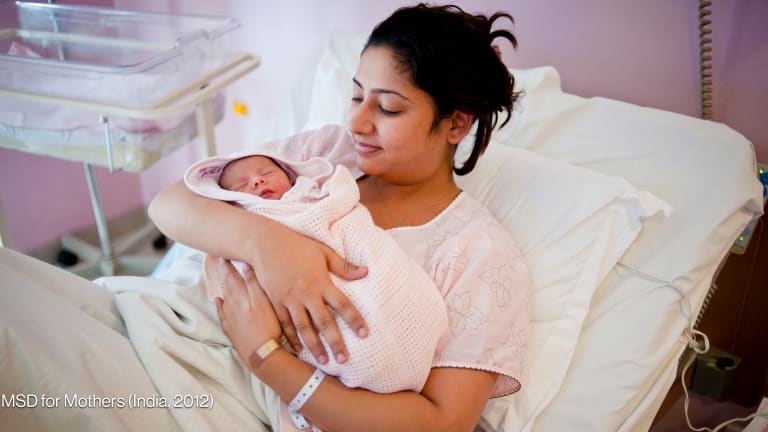
In 2017, 800 women died each day from preventable causes related to pregnancy and childbirth. And although the global number of newborn deaths have declined from 5 million in 1990 to 2.4 million in 2019, children still face the greatest risk of death in their first 28 days.
Opinion: Private sector, UHC, and maternal mortality amid COVID-19
MSD for Mothers' Temitayo Erogbogbo explains why now is the time to create deeper alliances across sectors at scale or risk losing the opportunity to make real, sustainable change.
Local private providers have a key role to play in improving access to health care services for women and children, said Blerta Maliqi, technical officer at the World Health Organization and team leader of the The Network for Improving Quality of Care for Maternal, Newborn and Child Health.
“We think that engaging private providers … is an untapped resource, something we’d like to know more [about] and engage with more countries on,” she said.
“There are still a lot of questions [around] the capacity of national governments — especially in low- and middle-income countries — in terms of engaging with the private sector and finding out how to work together to maximize impact,” Maliqi said.
This is an area of work that the WHO has identified as an entry point, she explained.
Speaking to Devex, Maliqi explained where she sees the private sector tying in to efforts to improve health for women and children, how the COVID-19 pandemic has highlighted its role in health systems, and the WHO’s plans to improve MNCH.
This conversation has been edited for length and clarity.
How is WHO looking at private sector capacity to maximize MNCH impact?
WHO is engaged with countries and partners to ensure that all countries are on track to achieve the Sustainable Development Goals for maternal and child health. We’re looking at maximizing the capacity of health systems to deliver quality maternal and child health and, in this case, we’re looking at all the health systems across all the mixed providers — public and private.
Until recently, we hadn’t engaged with governments in terms of understanding how they’re capitalizing or maximizing their governance to ensure the private sector is delivering and helping to assist in the delivery of SDGs.
What has the value of the private sector been during the pandemic in terms of health systems strengthening?
The last 18 months helped identify a lot of gaps in terms of capacity of health systems to immediately respond to pandemics. At the same time, it identified a lot of opportunities that had not been leveraged before the pandemic. One of the opportunities — that in many countries was almost an innovation — was engaging with private providers to deliver essential services while the health system was busy responding to COVID-19.
We’ve witnessed hospitals that were overloaded with COVID-19 cases in specific countries, especially during the peak of the pandemic. At times, that was associated with a disruption in essential services, including for maternal and child health. In this context, we’re seeing that both users of the services and also the governments have looked at building partnerships with private providers to deliver essential care that otherwise wouldn’t have been delivered, because the systems were saturated, or to deliver care around COVID-19.
What are WHO’s plans for advancing its strategy on engaging the private health service delivery sector through governance in mixed health systems?
Private sector engagement
As defined by the Organisation for Economic Co-operation and Development, this is an activity that aims to engage the private sector for development results, which involve the active participation of the private sector.
The definition is deliberately broad in order to capture all modalities for engaging the private sector in development cooperation, from informal collaborations to more formalized partnerships.
Read more about the definition and how Maternity Matters: Funding the Future is exploring the topic.
For maternal and child health, we’re in the process of establishing a working group with partners and [governments of] countries who are interested in advancing the agenda of governance of the private sector in mixed health systems … The objective is the achievement of SDG 3 on UHC and maximizing the capacity to implement MNCH across all providers with quality.
There are a number of partners and governments interested in joining. We’re in front of a situation in which there is very high interest, but there’s little knowledge on how to implement these types of processes so we’re looking at this working group as something that will allow us to learn together, to co-develop these processes, and to advocate for effective implementation.
How do you think the “new normal” will grant WHO a different space to help bridge the MNCH gap?
Despite improvements made on MNCH throughout the [Millennium Development Goals] era, the gaps in MNCH persist, which have made MNCH again one of the target areas within the health SDGs. That means that there’s really a lot of work to be done.
During this period of the [COVID-19 pandemic] in WHO, in addition to looking at how we address COVID-19 among pregnant women and children, which is a silent group because it wasn’t given immediate attention during the pandemic — we are focusing on strengthening essential services and care for women and children.
Among others, we have engaged with 15 LMICs across all WHO regions, and looked at both their preparedness and response plans, and the ways they ensure that mothers and children are not forgotten in this response. We’re working with them to strengthen health systems so that they’re able to respond to this shock, but also to future shocks in a way that will not forget mothers and children.
“One of the opportunities … was engaging with private providers to deliver essential services while the health system was busy responding to COVID-19.”
— Blerta Maliqi, technical officer at WHO and team leader of the The Network for Improving Quality of Care for Maternal, Newborn and Child HealthIn this process, we’ve found out that there are a few action areas that can help countries to maximize the response and results. That includes the use of a routine information system to understand how the situation is changing [through] continuous monitoring of the service delivery and utilization of essential services for women and children.
The use of digital solutions, especially for providing services, but also for sharing information and communication that allows people to participate [within the health system] meaningfully at any moment, is another area of interest. Then, we’re looking at new ways to provide care that haven’t been fully explored, such as self-care.
As we’re moving into the “new normal,” WHO continues to generate evidence and knowledge and identify best practices that can help member states and implementers to strengthen the health systems, not only to build back better but to build better with quality and ensure that we’re able to address the MNCH gaps created during COVID-19, [as well as those] which were there before COVID-19.
What is your call to action around bridging the MNCH gap worldwide?
For the MNCH gap, [WHO] will continue to work to address the existing gaps around the unfinished agenda of maternal mortality that concerns many countries in the world, especially in LMICs and emergency areas.
Next, we’re looking at strengthening quality and addressing morbidities and co-morbidities in those countries that are transitioning from high- and medium-mortality to lower-mortality rates. That is something that calls for health systems to [be] re-designed and for different thinking in how services are provided.
One last thing I would like to [emphasize] is that of equity that goes beyond a country … Being able to understand where we have the equity gaps and addressing those gaps, providing the governments and implementers with the tools and knowledge on how to go about it will remain very high on the agenda and most likely [be] one of the areas in which we will focus our work in the next years.
The Funding the Future series is supported by funding from MSD, through its MSD for Mothers program and is the sole responsibility of the authors. MSD for Mothers is an initiative of Merck & Co., Inc., Kenilworth, NJ, U.S.A.









